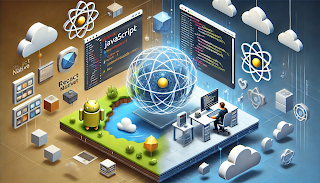ChatGPT: Revolutionizing Conversations with AI
Introduction:
In recent years, artificial intelligence (AI) has taken significant strides in transforming various industries, and one of the most exciting developments is natural language processing. Chatbots and conversational AI systems have become increasingly sophisticated, enabling more human-like interactions and enhancing user experiences. Among these advancements, ChatGPT, powered by OpenAI's GPT-3.5, has emerged as a revolutionary language model, offering incredible potential for a wide range of applications. In this blog, we will explore the capabilities and impact of ChatGPT and its role in shaping the future of communication.
fig.01 The new Artificial Intelligence
ChatGPT is the product of relentless research and development in natural language processing. OpenAI, an artificial intelligence research lab, first introduced GPT-3 (Generative Pre-trained Transformer 3) as a state-of-the-art language model. Building on its success, OpenAI launched ChatGPT, designed specifically for interactive and conversational tasks.
How ChatGPT Works:
At its core, ChatGPT is a
deep learning model that utilizes a Transformer architecture. Trained on an immense
amount of diverse text data, it learns patterns, grammar, and semantics from
vast corpora, making it highly adept at generating human-like responses. The
model uses unsupervised learning, allowing it to generalize and provide
coherent answers to user queries.
Versatility in Applications:
ChatGPT's versatility has
made it an indispensable tool across various domains. From customer support to
content creation, tutoring, brainstorming, and even coding assistance, ChatGPT
is a flexible AI that adapts to different tasks seamlessly. It empowers
developers, businesses, and individuals to harness its capabilities for
countless applications.
Enriching Customer Experience:
In the realm of customer
service, ChatGPT has emerged as a game-changer. It offers businesses an
opportunity to provide instant and personalized support to their customers.
With ChatGPT, companies can handle large volumes of queries simultaneously,
enhancing customer satisfaction and reducing response times.
Supercharging Content Creation:
For content creators and
writers, ChatGPT serves as an invaluable writing assistant. It can help
overcome writer's block, provide ideas, and assist in generating creative
content. From blog posts to marketing copy, ChatGPT streamlines the content
creation process and enhances productivity.
Education and Learning:
In the education sector,
ChatGPT has found applications as a tutoring tool and a virtual learning
assistant. It can answer students' questions, explain complex concepts in
simple terms, and provide step-by-step guidance, supplementing traditional
teaching methods.
Ethical Considerations:
As AI language models
like ChatGPT become more sophisticated, concerns regarding misuse and
misinformation arise. OpenAI has taken proactive measures to limit harmful
outputs, ensuring responsible deployment and protecting against potential
risks.
The Future of ChatGPT:
The journey of ChatGPT
has just begun. With continuous improvements and iterations, it is expected to
become even more proficient in understanding context and delivering accurate responses.
OpenAI's commitment to research and innovation promises a future where
conversational AI becomes an integral part of daily life.
Conclusion:
ChatGPT represents a
significant leap forward in the field of natural language processing, opening
up a world of possibilities for interactive and dynamic conversational AI
applications. Its ability to understand context, generate human-like responses,
and adapt to diverse tasks has already revolutionized industries and
transformed user experiences. As we move into the future, it is essential to
embrace AI responsibly, leveraging its potential while upholding ethical
principles. ChatGPT is just the beginning of a new era in communication, and
its journey will undoubtedly shape the way we interact with technology and each
other.
Written by-
Diksha Sahuji
.jpg)

.jpg)




.webp)













.png)






